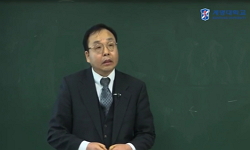본 연구는 2005년에 합의된 파리선언의 최종 이행성과에 대해 공여국 간 행동변화의 차이가 있다는 점을 바탕으로 공여국의 행동변화 차이의 이유에 대해 분석하였다. 나아가 본 연구는 파리...
http://chineseinput.net/에서 pinyin(병음)방식으로 중국어를 변환할 수 있습니다.
변환된 중국어를 복사하여 사용하시면 됩니다.
- 中文 을 입력하시려면 zhongwen을 입력하시고 space를누르시면됩니다.
- 北京 을 입력하시려면 beijing을 입력하시고 space를 누르시면 됩니다.

파리선언 이행을 위한 공여국의 행동변화와 효과적 개발협력을 위한 글로벌 파트너십에 대한 시사점 = Donor Behavior Change in Implementing the Paris Declaration and its Implication for the Global Partnership for Effective Development Cooperation: A Comparative Study of Sweden and China in Tanzania
한글로보기https://www.riss.kr/link?id=A99768995
- 저자
- 발행기관
- 학술지명
- 권호사항
-
발행연도
2013
-
작성언어
Korean
- 주제어
-
KDC
051
-
등재정보
KCI등재
-
자료형태
학술저널
-
수록면
209-232(24쪽)
- 제공처
-
0
상세조회 -
0
다운로드
부가정보
국문 초록 (Abstract)
본 연구는 2005년에 합의된 파리선언의 최종 이행성과에 대해 공여국 간 행동변화의 차이가 있다는 점을 바탕으로 공여국의 행동변화 차이의 이유에 대해 분석하였다. 나아가 본 연구는 파리선언의 후속체계인 ‘효과적 개발협력을 위한 글로벌파트너십’의 효과적 이행을 위한 공여국에 대한 시사점을 제시하고자 하였다. 이를 위해 본 논문은 공여국의 파리선언 이행결과가 비교적 좋았던 탄자니아 내에서 5대 변수를 중심으로 스웨덴과 중국의 파리선언 이행과정을 비교하였다. 비록 파리선언이 모든 참여국이 합의한 국제원칙이긴 하나, 공여국의 국제적 원칙이행에 필요한 행동변화를 위한 국내정치에 대한 고려가 이루어지지 않아 중국과 같은 Non-DAC 국가는 파리선언과 같은 국제원칙을 이행하는데 한계가 있으며, 이러한 점에서 파리선언의 후속체계인 글로벌파트너십의 이행에 있어서도 이 부분은 여전히 해결과제로 남아있다.
다국어 초록 (Multilingual Abstract)
Since 2005, donors committed to the Paris Declaration (PD), but donor behavior in implementing the PD was slow and uneven. The unfinished agenda from the PD has been reflected in the newly-introduced Global Partnership for Effective Development Cooper...
Since 2005, donors committed to the Paris Declaration (PD), but donor behavior in implementing the PD was slow and uneven. The unfinished agenda from the PD has been reflected in the newly-introduced Global Partnership for Effective Development Cooperation (GPEDC) indicators in 2012, and slow and uneven donor responses have been a concern in implementing the new global commitments. In this light, this paper examines why donor behavior was different in implementing the PD even though they signed on the PD commitment, by focusing on the influential factors at the international level. At the same time, the study provides an implication for the GPEDC implementation mechanism with a comparative study of Sweden and China in Tanzania. Based on the analysis of the variables attributing to donor behavior change, this study argues that the design of the PD was an easy option for like-minded donors (Sweden) while it was difficult to adopt the mechanism for emerging donors (China) since the Paris model did not consider the national level politics in implementing the internationally agreed principles. In the end, this implicates a trend which contradicts the harmonization mechanism of the GPEDC implementation as a potential limitation.
동일학술지(권/호) 다른 논문
-
문화적 다양성과 젠더 평등: 유럽내 무슬림 여성의 베일 논쟁을 중심으로
- 한국세계지역학회
- 박채복 ( Chae Bok Park )
- 2013
- KCI등재
-
마이크로 금융과 에티오피아 여성의 경제적 임파워먼트: 아디스신용저축기관(ADCSI)의 사례를 중심으로
- 한국세계지역학회
- ( Banchayehu Girma )
- 2013
- KCI등재
-
세계사회와 지구시민사회를 연계하는 글로벌 거버넌스로서의 국제연합(UN)
- 한국세계지역학회
- 장준호 ( Jun Ho Chang )
- 2013
- KCI등재
-
한국 민주주의에 대한 일반 시민들의 평가: 노무현 정부 시기를 중심으로
- 한국세계지역학회
- 이재철 ( Jae Chul Lee )
- 2013
- KCI등재




 KCI
KCI 스콜라
스콜라






